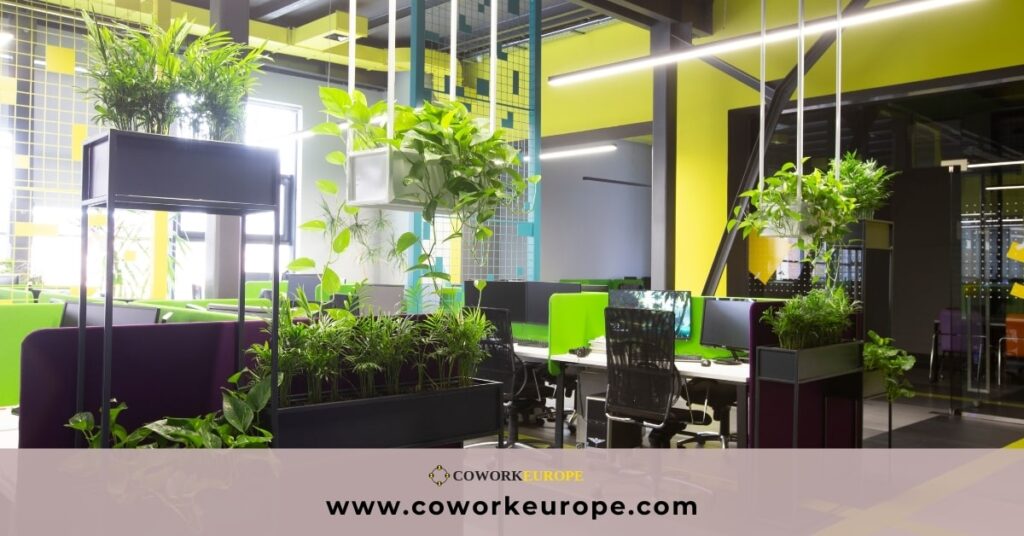In recent years, the concept of coworking has revolutionized the way we work, blending flexibility and community into a single space. As businesses and individuals increasingly seek ways to reduce their environmental impact, sustainable coworking practices have emerged as a key trend. This article explores how coworking spaces are embracing sustainability, focusing on creating a green office environment, and offering practical tips and highlighting innovative practices that are shaping a greener future for work.
What Are Sustainable Coworking Practices?
The term “sustainable coworking practices” describes policies and programs used in coworking spaces to reduce their negative effects on the environment and encourage social responsibility. These methods can include encouraging a sustainable culture among individuals as well as reducing waste and energy use. Coworking spaces are taking various steps to become green offices and meet with global sustainability standards.
Key Elements of a Green Office in Coworking Spaces
1.Green Energy Sources
Energy Efficiency: A lot of coworking spaces are switching to renewable energy sources, like wind or solar energy. This change makes the area a true green office by lowering greenhouse gas emissions and promoting sustainable energy.
Energy-Efficient Lighting: In contemporary coworking spaces, advanced detectors and LED lighting are becoming standard. By adjusting lighting according to occupancy and natural light levels, these solutions dramatically lower energy usage. Moreover, it improves the experience of working in a green environment.
2.Waste Reduction
Recycling Programs: Reducing waste requires efficient recycling efforts. Coworking spaces contribute to the upkeep of a green workplace by often providing members properly labeled recycling bins and instruction on proper disposal techniques.
Zero-Waste Initiatives: By implementing zero-waste guidelines, certain venues are moving beyond recycling. In order to promote a more sustainable green workplace environment, this entails reducing the number of single-use goods and encouraging members to bring reusable containers and utensils.
3.Eco-Friendly Furnishings
Sustainable Design and Materials: Using recycled or sustainably sourced materials in furnishings and décor lessens the environmental effect of office interior design. Including these kinds of components in the design helps to promote the green office concept.
Green Building Certifications: In order to strengthen their reputation as green offices and show their dedication to sustainable building techniques, a lot of coworking spaces are aiming for certifications such as LEED (Leadership in Energy and Environmental Design).
4.Water Conservation
- Efficient Fixtures: Installing low-flow faucets, toilets, and water-saving appliances can significantly reduce water usage in coworking spaces. These measures are essential for creating a green office that values resource conservation.
- Water Recycling Systems: Some coworking spaces are incorporating rainwater harvesting and greywater recycling systems to further minimize water waste, contributing to their green office credentials.
5.Promoting Sustainable Transportation
- Bike-Friendly Facilities: Providing bike racks and encouraging cycling helps reduce the carbon footprint associated with commuting. Some coworking spaces even offer shower facilities for cyclists, supporting the green office movement.
- Public Transport Incentives: Many spaces offer incentives for members who use public transportation, such as discounted transit passes or shuttle services, aligning with the green office philosophy.
Building a Culture of Sustainability in a Green Office
In order to create a sustainable coworking space, members have to be encouraged to adopt a sustainable culture in addition to using green technologies and practices. Coworking spaces can further develop this culture and improve their green workplace credentials in the following ways:
- Community Challenges: Setting up competitions or challenges centered around sustainability can get people involved in enjoyable activities. For example, cutting back on plastic or using less electricity, which helps to further the green office culture.
- Feedback and Improvement: Encouraging members to offer input on sustainability projects promotes a sense of group responsibility within the green workplace community and helps discover areas for improvement.
- Education and Awareness: Members can get an understanding of the value of environmentally friendly activities. They can contribute to a green working environment by attending regular workshops and seminars on sustainability.
Success Stories: Innovative Examples of Green Offices
- The Riveter: Sustainability is deeply rooted in the basic principles of this coworking space. A green office can be defined by a commitment to sustainability. As The Riveter shows by defining their design with saved wood and enforcing zero-waste standards.
- WeWork’s Green Initiatives: By implementing energy-efficient technologies and pursuing green building certifications, WeWork has made notable progress toward sustainability. Their international strategy demonstrates how sizable coworking networks may set the standard for the green office movement.
- Impact Hub: With sites across the globe, Impact Hub is a global hub for the creation of sustainable spaces. It specializes in waste reduction, eco-friendly design, and social enterprise support. Their concept illustrates the potential for coworking spaces to spur positive social and environmental change.
How You Can Support a Green Office
Here are some simple things you can do as a coworking space member to encourage sustainability and a green office:
- Adopt Green Practices: Use eco-friendly materials in your environment, cut down on waste, and install energy-saving devices.
- Involve the Community: To promote an environmentally conscious culture, take part in or plan sustainability challenges and events.
- Support Green Businesses: Select suppliers and vendors that place a high value on sustainability. Think about providing eco-friendly goods and services in your coworking area.
Conclusion
Sustainable coworking practices are an important step towards a more environmentally friendly workplace; they are more than a trend. Through the implementation of energy efficiency, waste reduction, the use of sustainable materials, and the promotion of a sustainable culture, coworking spaces are contributing to the creation of green offices and laying the groundwork for a future in which businesses are more environmentally sensitive. Whether you run a coworking space or are a member, you can support this worldwide trend by building a workspace that benefits the environment and your business.








